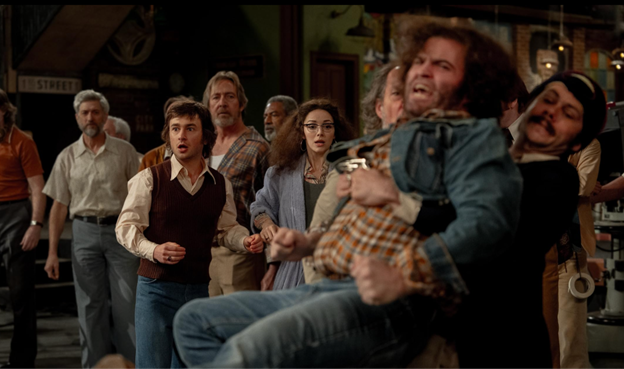
The Lambert family has moved into a new home, hoping for a fresh start and new opportunities. But when son Dalton has an accident and falls into an unresponsive, coma-like state, his doctors are dumbfounded and his parents are devastated.
Soon, however, increasingly terrifying sights and sounds plague the entire house, and the Lamberts begin to question whether supernatural forces might have caused Dalton’s condition. They call in a team of psychic experts to see if they can discern the real source of the family’s nightmares, save their son’s soul and banish the evil haunting their family.
Considering that “Insidious” recreates one of the most overused storylines in the horror genre, “Poltergeist,” the film manages to be surprisingly effective in building an unsettling atmosphere. The first half of the film is a nice blend of family drama and supernatural scares. It’s a slow build of momentum, and the fact that the scary moments are so spaced out somehow makes them more agonizingly unnerving.
Director James Wan cleverly upends our expectations. Moments in which we’d expect a jump scare often deliver nothing, while at other times horror comes at us without any musical cue. In a film that frequently feels like a patchwork of the classic horror movies of the past in its plot and execution, this unpredictability is probably the strongest and most original aspect of “Insidious.”
None of the ways in which the film heightens tension are new, but they are all used effectively. In a refreshing turn from the standards set by his “Saw” franchise, Wan uses minimal gore in “Insidious.” With the exception of a single bloody handprint, this film never resorts to that type of visceral scare, turning instead to other methods of frightening the audience.
Music, of course, is creepily employed. Particularly noteworthy is the use of Tiny Tim’s “Tiptoe Through the Tulips,” which loses all its comic value and instead becomes genuinely horrifying. The film’s alternating gray and fluorescent lighting gives all the actors’ faces a washed-out feel, which contributes even further to the sense of exhausting horror.
For the majority of the film, the monsters are obscured by veils, curtains and fogged windows. The filmmakers know that the viewer’s imagination can create images far scarier than any visual effect, and for a time that strategy pays off. The uncertainty of what you’re seeing combined with the uncertainty of when you’re going to see it allows the early stages of “Insidious” to rival even the best of classic horror films, including those from which it borrows many of its elements.
Unfortunately, the frightening tension built up in the first half of the movie is not maintained toward the end. The scares in “Insidious” are most effective when they occur in brief, uncertain flashes. When the film lingers too long on the horror and unveils the actual demons, they lose all their punch.
The film’s modest budget, estimated at $1 million, painfully shows in its special effects. The demons, ghosts and zombies that populate the end of the movie are, for the most part, comically unconvincing. A plot twist tries to recover what is lost, but does not succeed. The ending of “Insidious” is a letdown.
Regardless, the performances in the film are solid. Patrick Wilson (“Watchmen,” “Hard Candy”) and Rose Byrne (“28 Weeks Later”) are convincing as Josh and Renai Lambert. They skillfully toe the line between family drama and horror without ever becoming unrealistically hysterical. In a role that could have easily become ridiculous, Lin Shaye is equally grounded as Elise, the psychic investigator. Leigh Whannell and Angus Sampson, who play Elise’s partners, are comical, though their undesired comedic relief plays a significant part in destroying the film’s atmosphere.
Barbara Hershey, fresh off her role as a creepy mother in “Black Swan,” switches things up to play a creepy grandmother here. Her part is perhaps the most confusing element of “Insidious,” as the film jarringly throws the character into the plot and leaves her extremely undeveloped. Hershey’s inclusion may have simply been a nod to her horror pedigree from 1982’s “The Entity,” but her part is, unfortunately, negligible.
“Insidious” will keep you tense if not terrified for a portion of its run, but, like many horror films, it cannot sustain the tension throughout. Leave halfway through and you might be satisfied; stay until the end and you’ll inevitably be disappointed.
Ian Opolski can be reached at [email protected].






